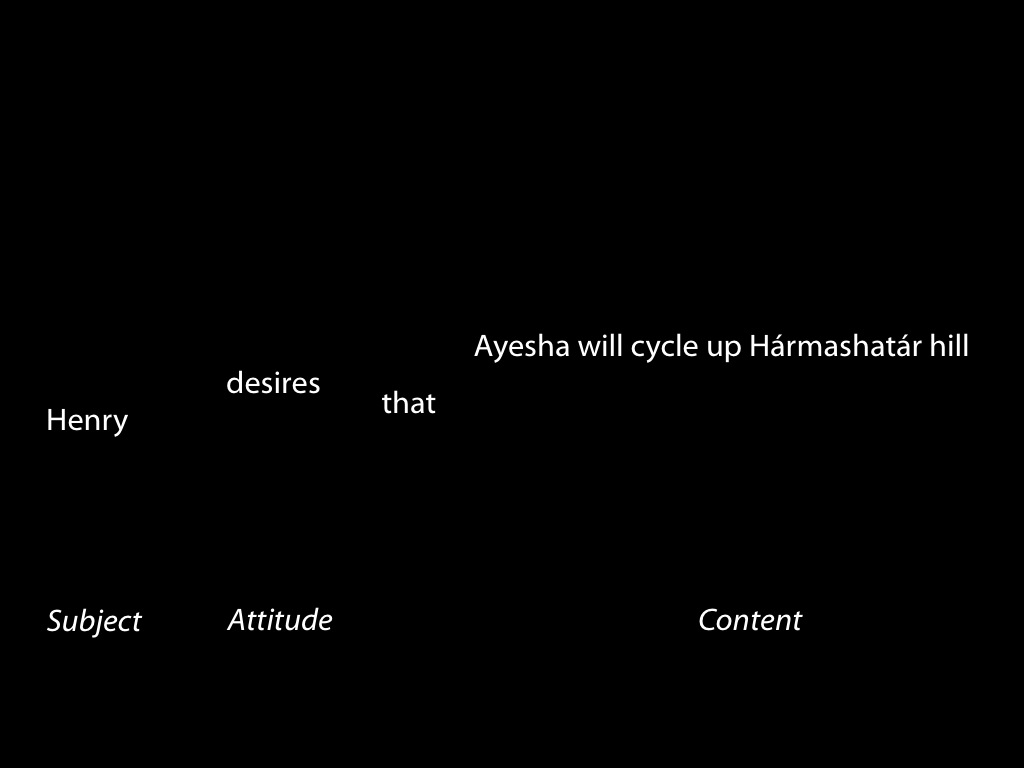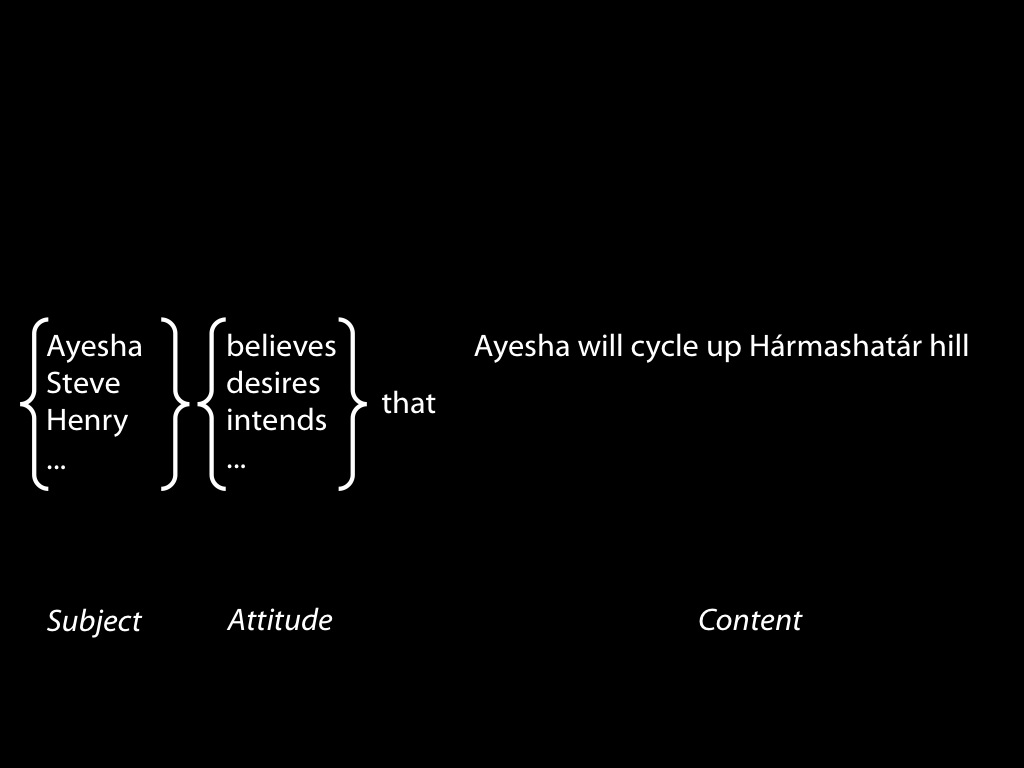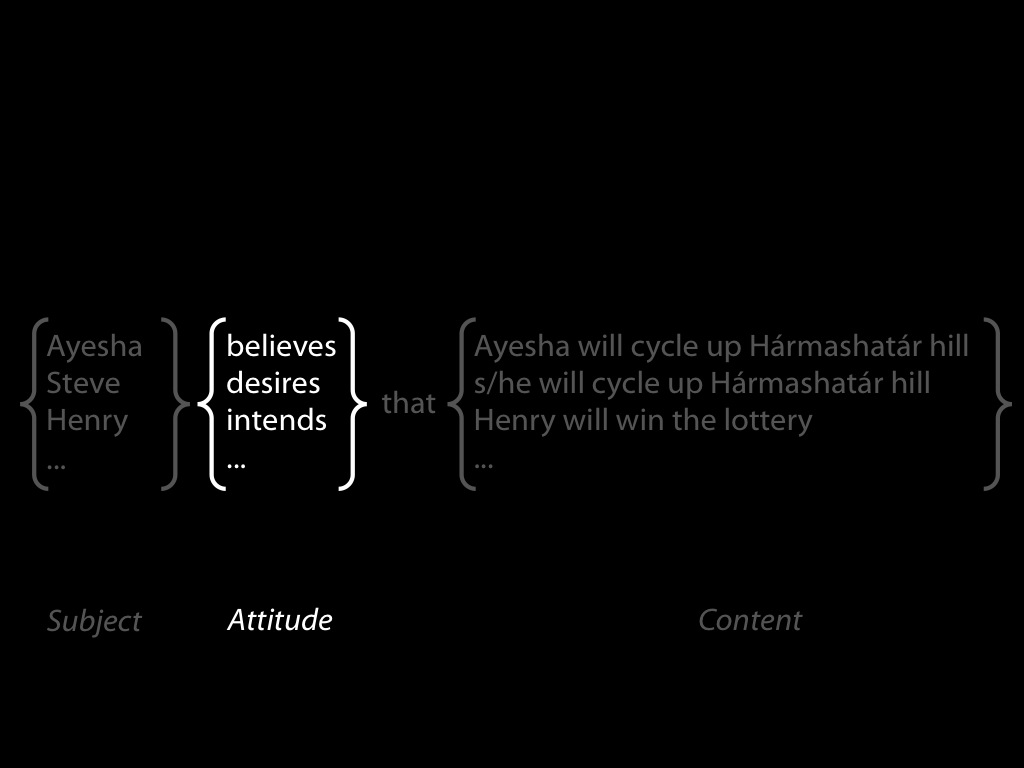Press the right key for the next slide (or swipe left)
also ...
Press the left key to go backwards (or swipe right)
Press n to toggle whether notes are shown (no equivalent if you don't have a keyboard)
Press m or double tap to see a menu of slides
Like Knowledge and Like Not Knowledge
I'm sorry to keep repeating this but I want everyone to understand where we are.
There are principles of object perception that explain abilities to segment objects, to represent them while temporarily unperceived and to track their interactions.
These principles are not known. What is their status?
the problem
The problem is quite general.
It doesn't arise only in the case of knowledge of objects but also in other domains
(like knowledge of number and knowledge of mind).
And it doesn't arise only from evidence about infants or nonhuman primates; it would also
arise if our focus were exclusively on human adults.
More on this later.
For now, our aim is to better understand the problem as it arises in the case of knowledge of objects.
generality of the problem
One hopeful alternative is to shift from talk about knowlegde to talk about representation.
Will this help?
Only as a way of describing the problem.
We need to say what we mean by representation.
The term is used in a wide variety of ways.
As I use it, representation is just a generic term covering knowledge, belief and much else besides.
knowledge representation
If we are going to substitute representation for knowledge,
we need to characterise what kind of representation we have in mind.
The term is tricky.
As \citet{Haith:1998aq} says, ‘no concept causes more problems in discussions of infant cognition than that of representation.’
‘no concept causes more problems in discussions of infant cognition than that of representation’
(Haith 1998)
\citep{Haith:1998aq}.
Take a paradigm case of representation.
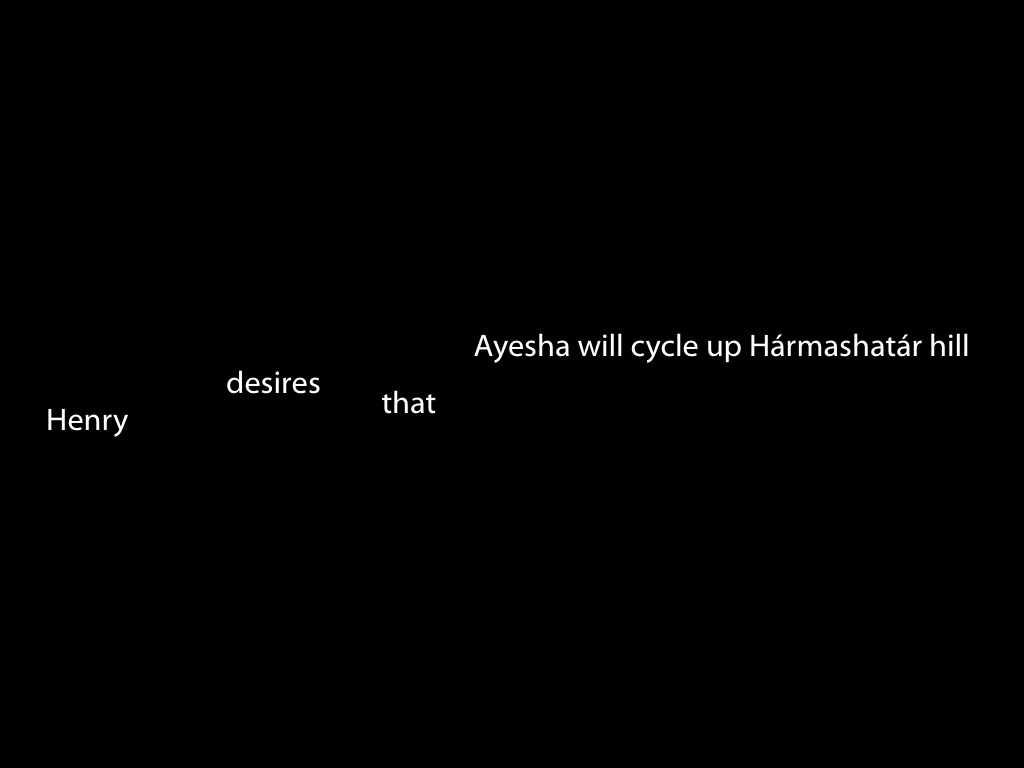
The subject might not be the agent but some part of it.
That is, we can imagine that some component of an agent, like her perceptual system or motor system, represents things that she herself does not.
(Of course, to make sense of this idea we need to invoke some notion of system.)
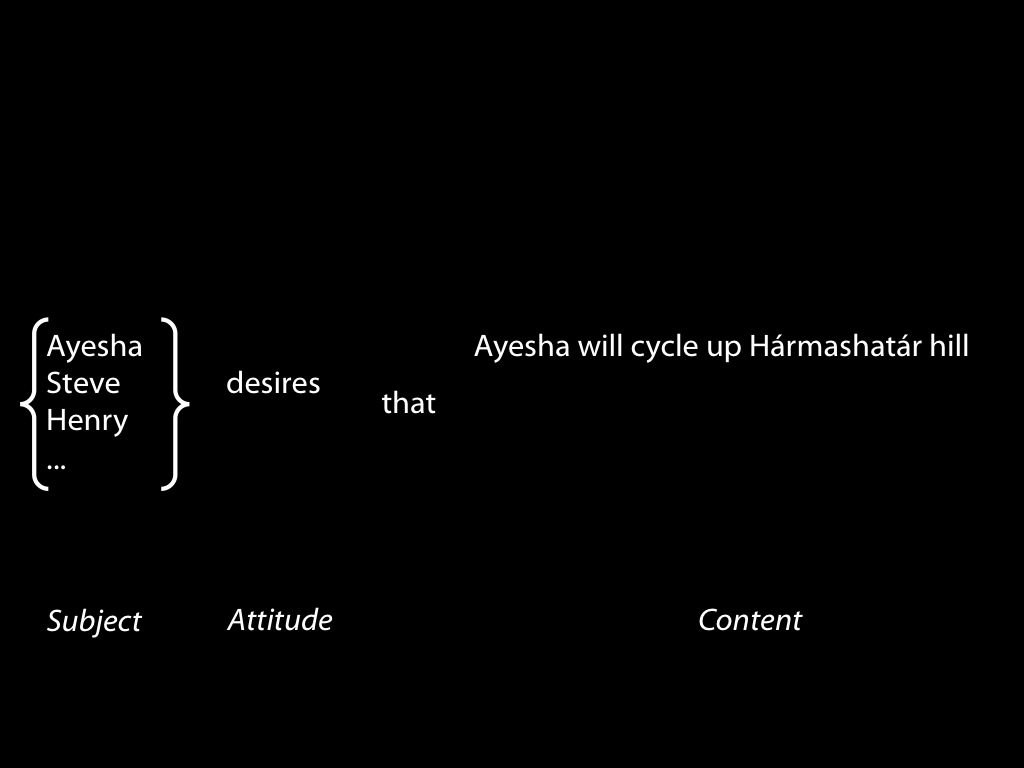
The content is what distinguishes one belief from all others, or one desire from all others.
The content is also what determines whether a belief is true or false, and whether a desire is satisfied or unsatisfied.
There are two main tasks in constructing a theory of mental states.
The first task is to characterise the different attitudes.
This typically involves specifying their distinctive functional and normative roles.
The second task is to find a scheme for specifying the contents of mental states.
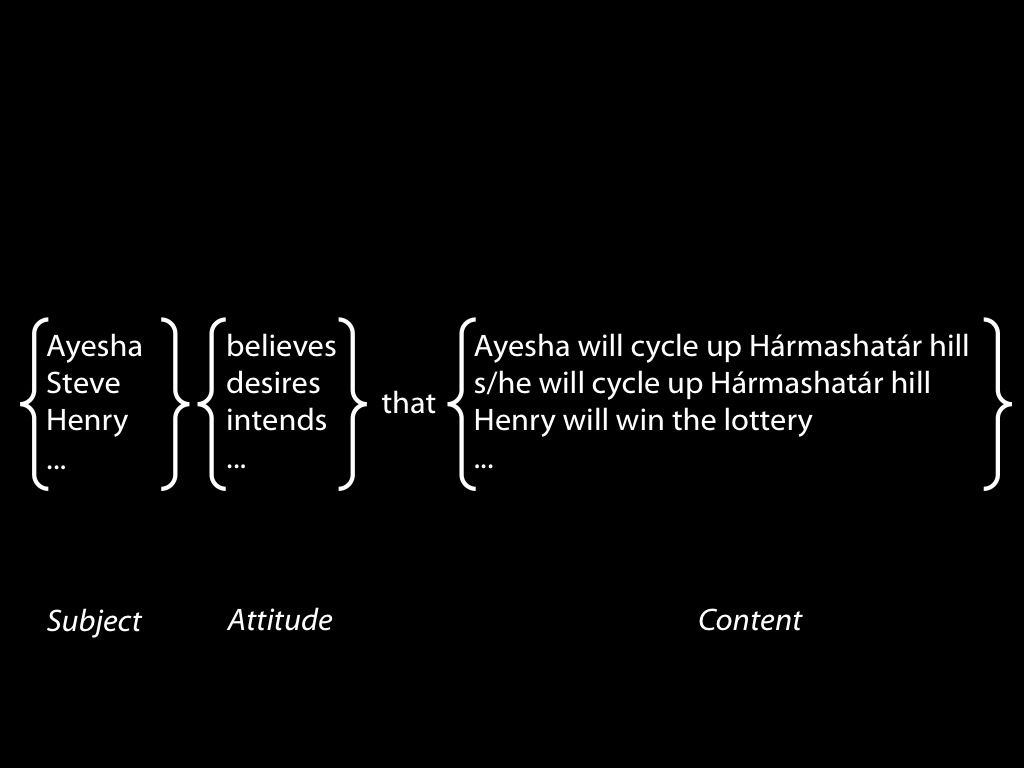
The second task is to find a scheme for specifying the contents of mental states.
Usually this is done with propositions.
But what are propositions?
Propositions are abstract objects like numbers.
They have more mystique than numbers, but, like numbers, they are abstract objects that can be constructed using sets plus a few other basic ingredients such as objects, properties and possible worlds.
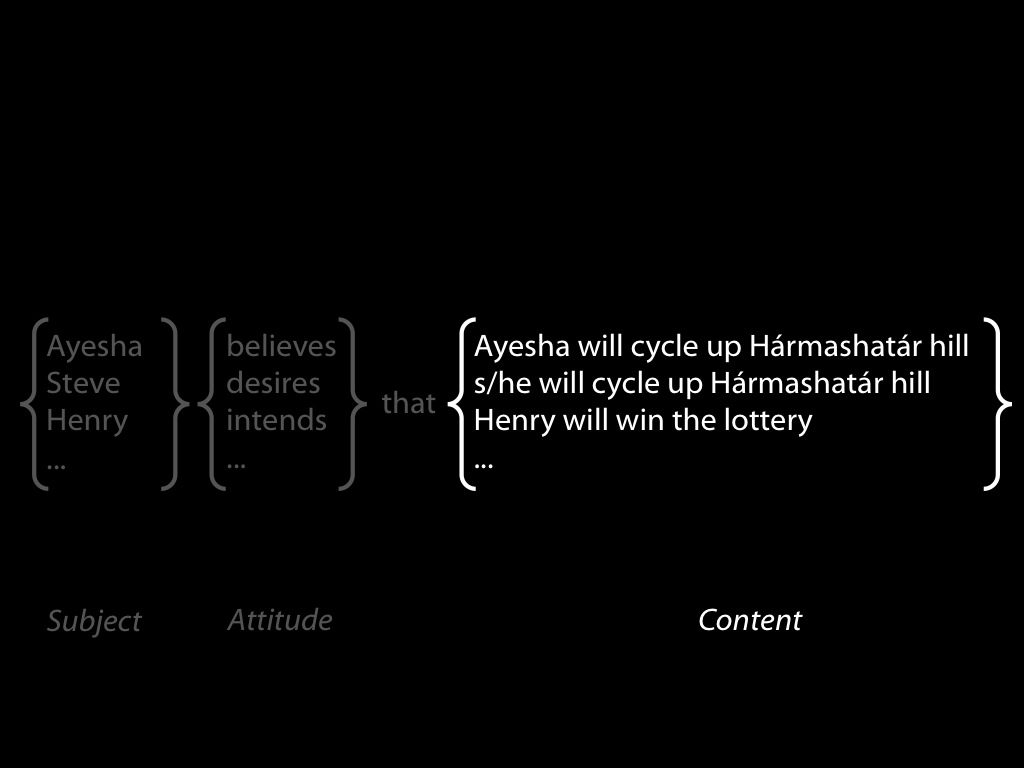
So that was some quick background on representation.
Note that the issue of representation comes up twice for us.
There is a question about whether the principles of object perception are represented.
And there is a question about whether objects, their locations, properties, and interactions are represented.
The problem raised by the discrepancy between looking and acting is a problem for two claims: (i) the simple view (the principles of object perception are knowledge &c); and also (ii) the claim that the representations of objects which derive from the principles of object perception are knowledge states.

So to say that we don't know the principles of object perception but only represent them doesn't tell us much.
This is a step in the right direction.
But it tells us that we represent them without knowing them.
What we need if we're to have an explanatory answer to Q2a is to know positively how we do represent the principles of object perception --- subject, attitude and content.
We need to characterise a form of representation that is like knowledge but not like knowledge.
knowledge representation
Your handbag is bluging, and when you swing it at me something really hard hits me.
It must be full of rocks.
Except it can't be because you are not strong enough to lift such a big bag full of rocks.
In that case, it must be wrocks not rocks.
A wrock is just like a rock except that it lacks mass.
Compare: this representation is just like knowledge except that it doesn't guide action; this process is just like inference except that it lacks the normative aspects of inference.
the parable of the wrock
\citet{Munakata:2001ch} suggests that there are 'graded representations', that is knowlegde can be stronger or weaker.
Presupposes we have an account of subject, attitude and content. Let's grant that.
What is strength? Some additional component, over and above subject, attitude and content.
The idea is quite intuitive but difficult to make systematic sense of.
The idea might well make sense if we were talking about neural representations.
But here we aren't. Let's not introduce radically new ideas about representation unless we really have to.
(By the way, \citet{Munakata:2001ch} is a nice review of dissociations, not only developmental dissociations.)
strength (Munakata 2001)
Recall what Davidson said: we need a way of describing what is in between thought and
mindless nature. This is the challenge presented to us by the failure of the Simple View.
‘if you want to describe what is going on in the head of the child when it has a few words which it utters in appropriate situations, you will fail for lack of the right sort of words of your own.
‘We have many vocabularies for describing nature when we regard it as mindless, and we have a mentalistic vocabulary for describing thought and intentional action; what we lack is a way of describing what is in between’
(Davidson 1999, p. 11)

